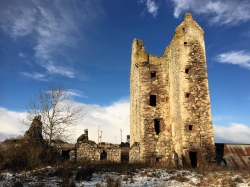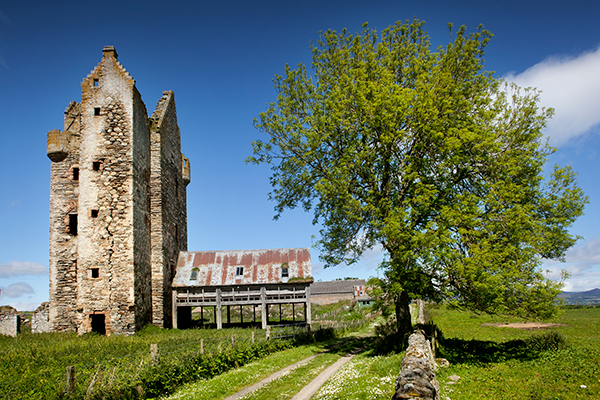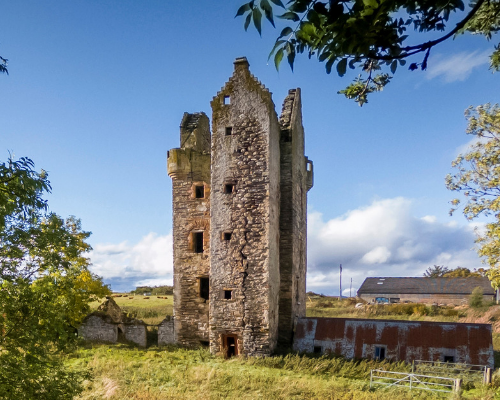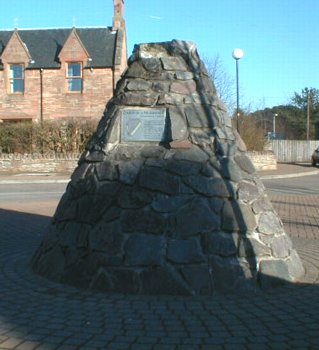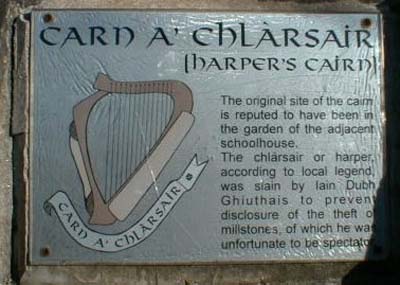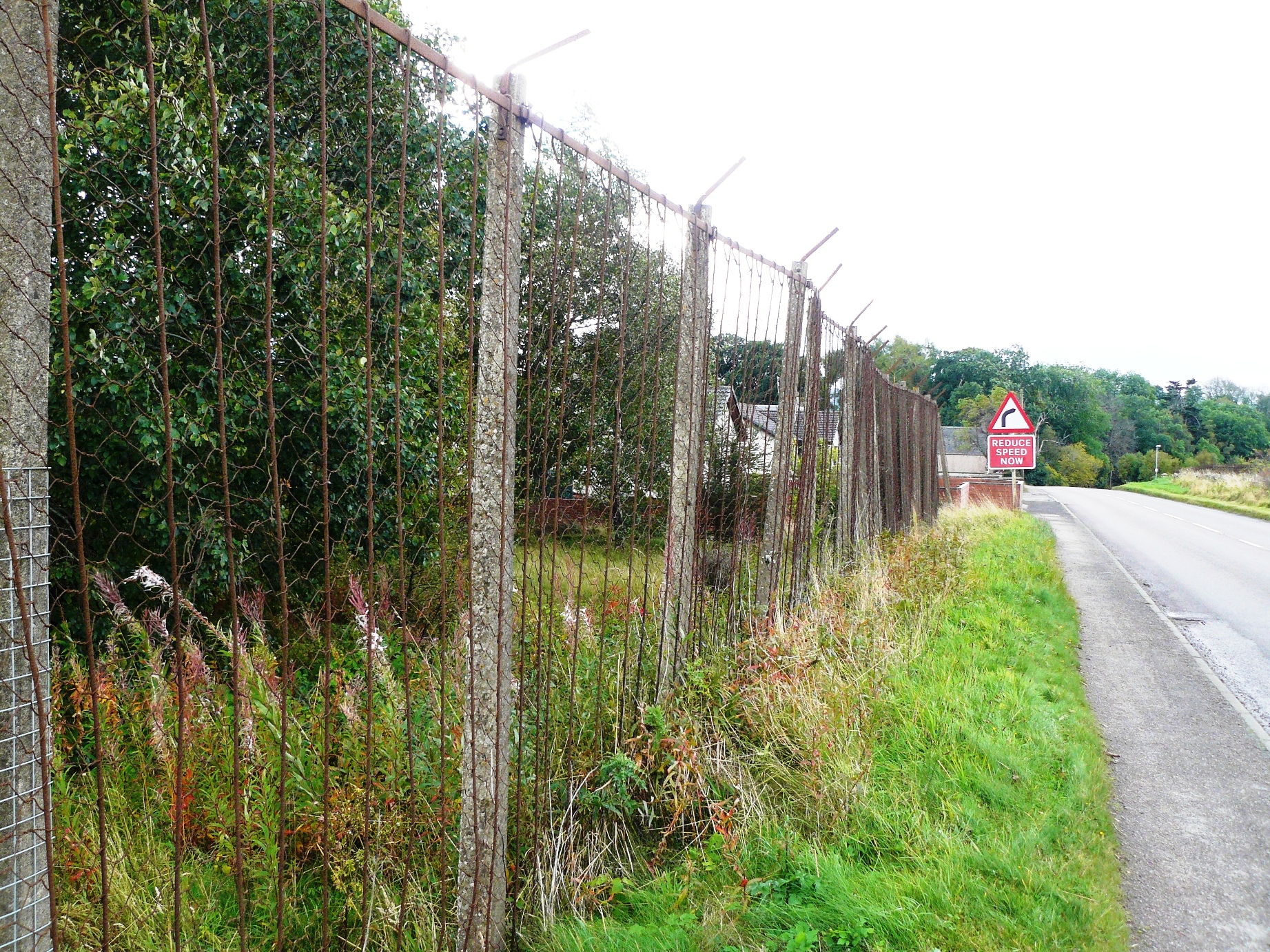Muir of Ord Features
Attribution: not recorded or unknown
Fairburn Tower
Fairburn Tower owes its fame to the prophecy of the Brahan Seer who claimed:
The day will come when the Mackenzies of Fairburn shall lose their entire possessions; their castle will become uninhabited and a cow shall give birth to a calf in the uppermost chamber of the tower.
By 1851 the tower was a ruin and was used by a farmer to store hay.
It is said that a cow followed a trail of hay up the stairs to the top of the tower where it got stuck and then gave birth to a calf. By the time both were taken down five days later locals had had opportunity to see for themselves the fulfillment of the prophecy.
The origins of the tower stem from 1542 when King James V granted land to Murdo Mackenzie, Gentleman of the Bedchamber, to erect the building.
When the Mackenzies backed James Stuart, the Old Pretender, during the 1715 rebellion, the subsequent defeat of James led to the Crown confiscating Mackenzie’s estate.
It was later restored to Alexander Mackenzie, but he declined to fight for King George in the Jacobite uprising of 1745. By this time the estate was in decline, was eventually deserted and the tower became a ruin.
Fairburn Tower and Landmark Trust
In 2018 it was announced that the Landmark Trust, a building conservation charity, was setting up an appeal to raise £800,000 to save the building.
Historic Environment Scotland (HES) has offered support to the tune of £455,000, but the total cost is estimated to be around £1.8 million.
For further information please see
www.landmarktrust.org.uk
In the summer of 2019 The Landmark Trust issued an appeal for the final £300,000 of the £1.8 million cost of restoration, to permit urgent repair works prior to construction work beginning in 2020.
Widening structural cracks require scaffolding to be erected around the tower in order to protect it against another harsh winter, before work can commence to restore the building to self-catering holiday accommodation.
Harper's Cairn
Harper’s Cairn, can be found at the entrance to the car park and village square, in the centre of Muir of Ord and was built as a memorial to the Harper, cruelly slain by Iain Dubh Ghiuthais.
Dating back to around the 17th century, the story goes:
Ian Dubh a Ghiuthais, known as Black John of the Fir, an ancestor of the MacKenzies of Ord, is said to have taken umbrage at the Laird of Tarradale and resolved to do him an injury.
He proceeded at midnight with a band of gillies to Tarradale and stole their millstones. Making off with their spoil, they overtook a wandering harper near where the Tarradale Hotel now stands and, lest he should give away any information about what he had seen, they cruelly murdered him on the spot.
It is said they buried him in a field nearby with his harp lying at his feet.
A cairn was erected to the memory of the harper around the area of the Tarradale Hotel but has long since disappeared.
This gave rise to the name Carn a‟ Chlarsair (The Harper‟s Cairn) commonly
used around the area.
The plaque on Harper’s Cairn reads:
“The original site of the cairn is reputed to have been in the garden of the adjacent schoolhouse.
The Chlarsair, or harper, according to local legend, was slain by Iain Dubh Ghiuthais to prevent disclosure of the theft of millstones, of which he was unfortunate to be spectator.”
Military Fence
Forming a perimeter fence around part of the Muir of Ord Industrial Estate, this military looking fence is not what it appears to be.
Follow the link below to read more.

